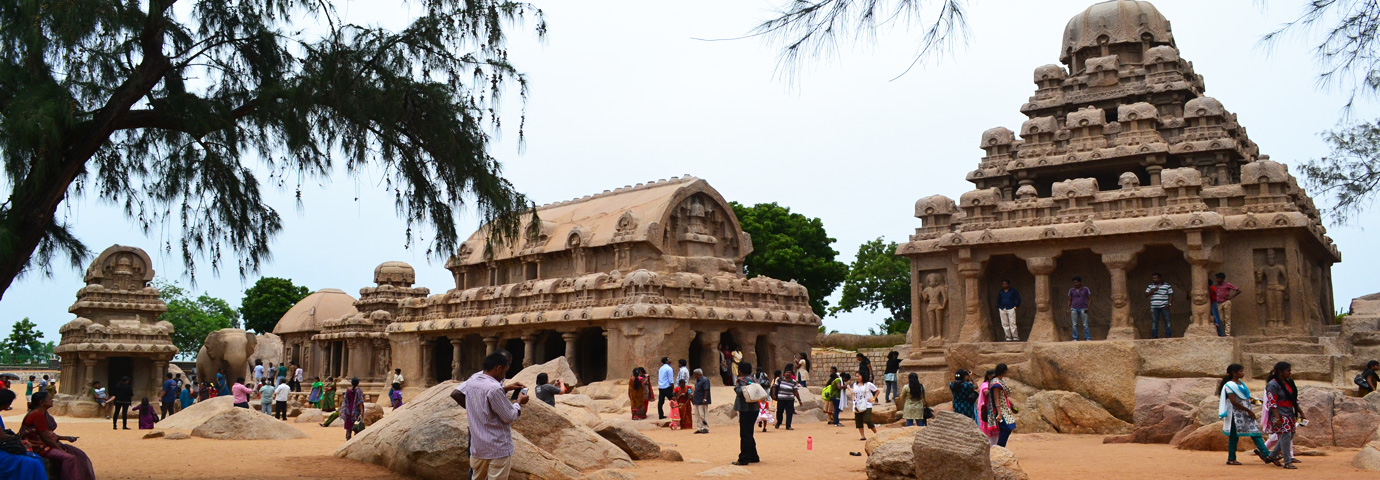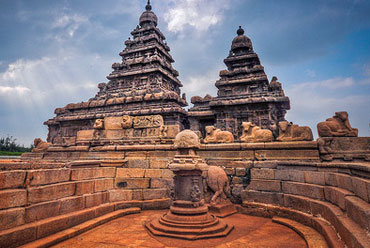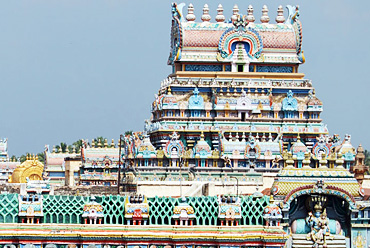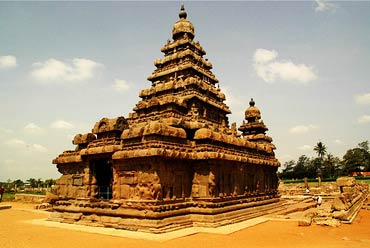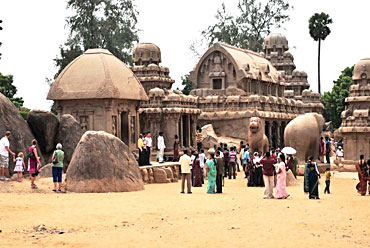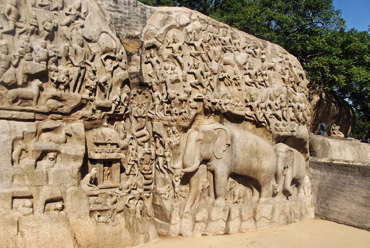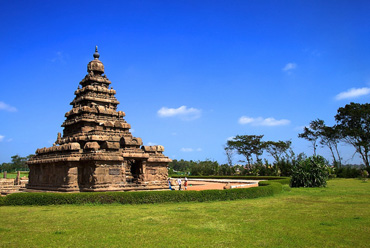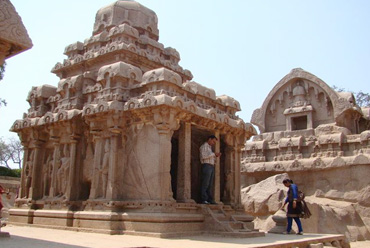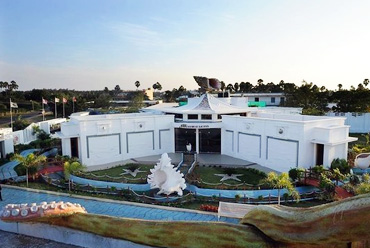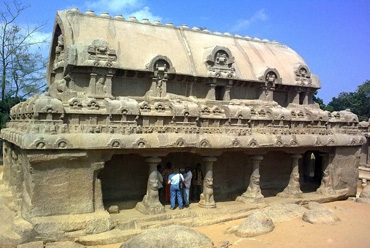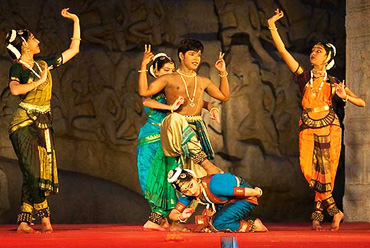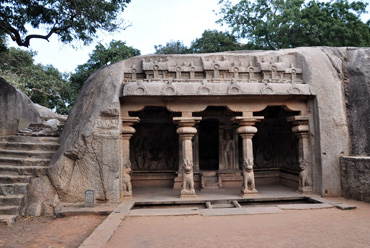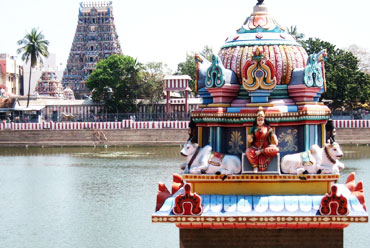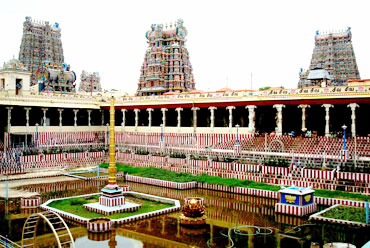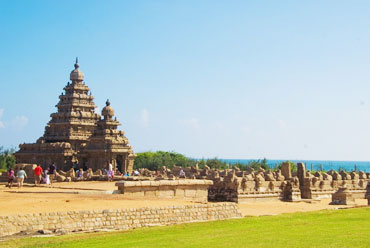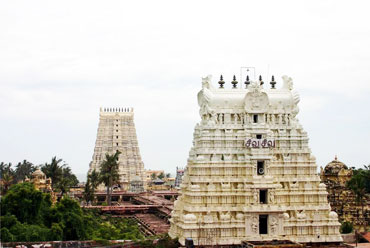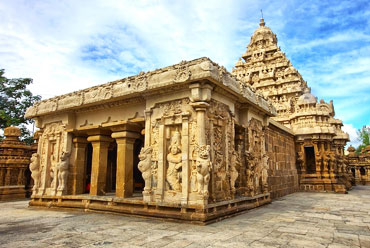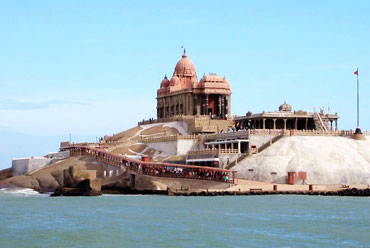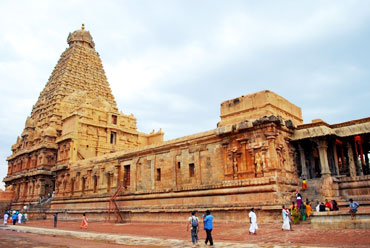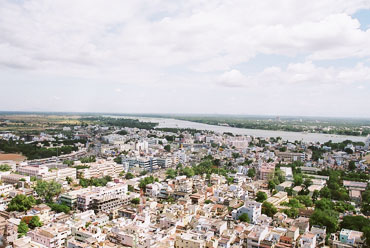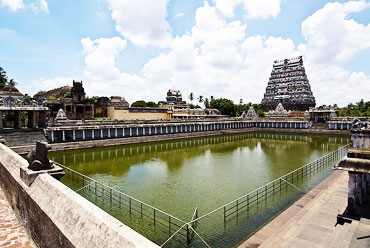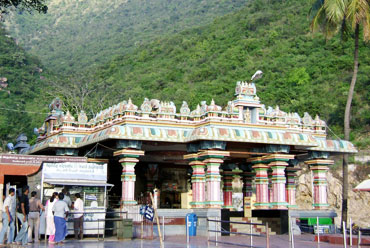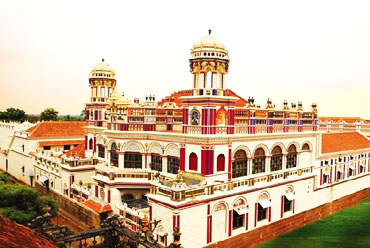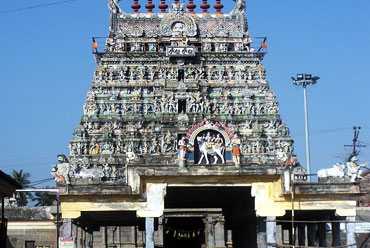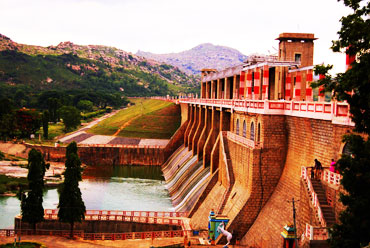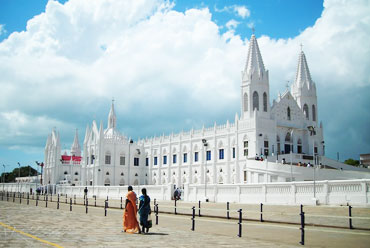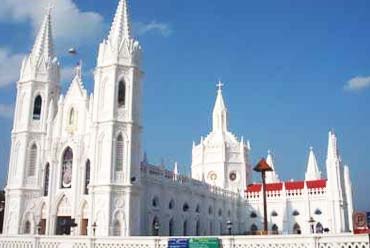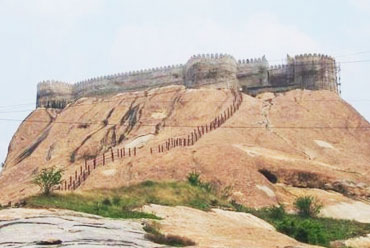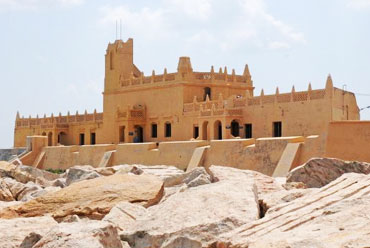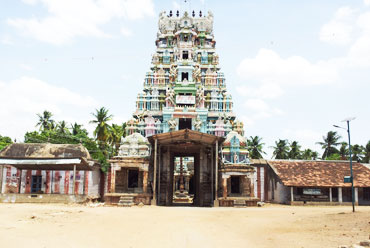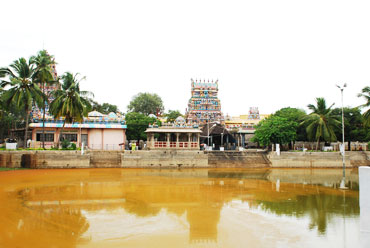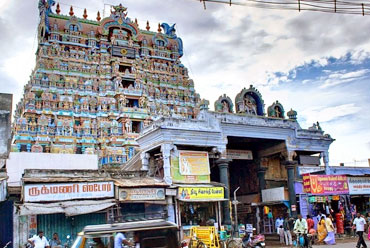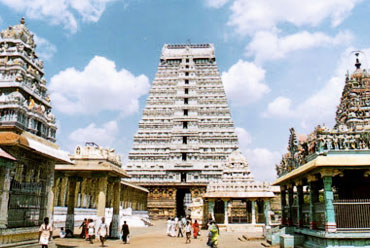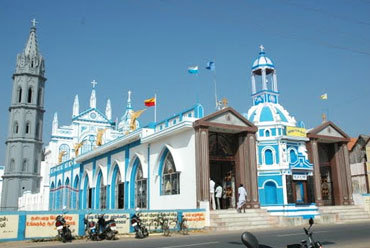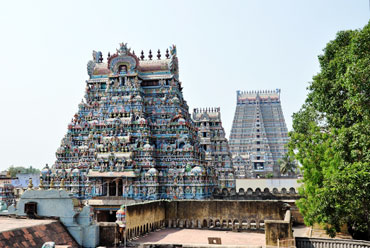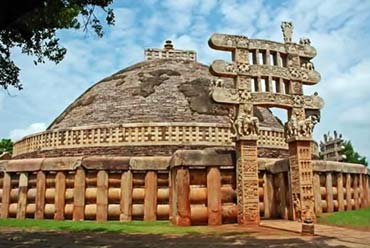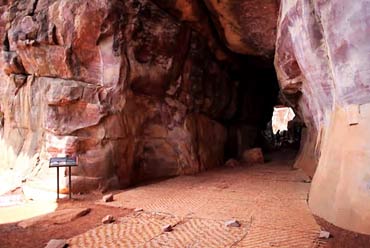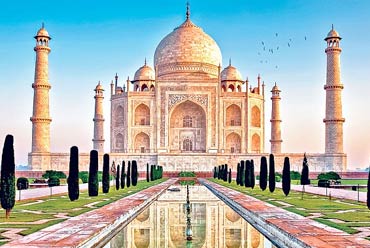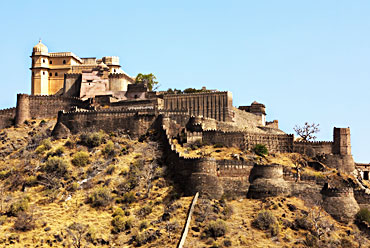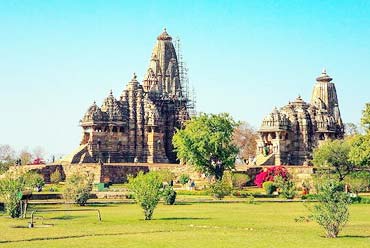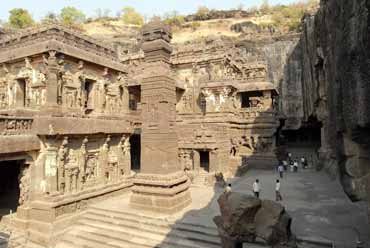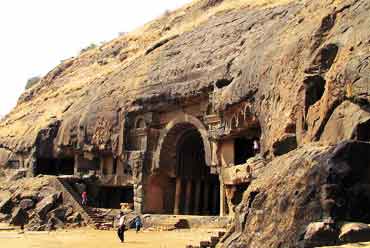Panch Rathas is a monument complex at Mahabalipuram. The coastal city along the shores of Bay of Bengal was a major seaport of the ancient Pallava kingdom. It is currently one of the magnificent UNESCO World Heritage sites.
The Panch Rathas are five rock marvels in the monument complex. It is known for its, 'rathas' or monolithic rock temples cut out in the form of chariots. Constructed from multiple materials, the monolithic structures have bas-relief sculptures carved on it. The five Ratha temples stand majestically on the southernmost extreme of Mahabalipuram. Pallava ruler Narsimha Varman 1 (AD 630- 68) built the majestic architecture in the 7th and 8th centuries.
The Five Rathas are named after the legendary Pandavas, Yudhistara, Arjuna, Bhima, Nakula & Sahadeva and their wife Draupadi. The statues of an elephant (the vehicle of Indra), lion (the vehicle of Durga) and Nandi bull (the vehicle of Shiva) are displayed along with the rathas. Though these temples are named after the Pandava brothers, they are not related to Mahabharata. The Rathas were built as models of South Indian temples. As they were not consecrated, therefore were not used for worship. Most of them remain incomplete but enchanting in their own way. The architectural elements gives a lovely impression of the remarkable architecture of the Pallavas.
Dharmaraja Ratha (Yudhisthir’s Ratha)
Shaped like a characteristic vimana (tower above the shrine) of Southern India of its times, Dharmaraja Ratha it the most magnificent and tallest of the Five rathas, with three storeys, though most of it remains incomplete.
The shrine is devoted to Shiva and is adorned with one of the best examples of early Pallava art. Very beautiful are the Shiva figures on the corners of structure. Dharmaraja Ratha contains engravings in Pallava Grantha script of the titles of Narasimhavarman I. Inscription mentions that this was created as Shiva temple of Atyantakama Pallava. Especially fascinating is the sculpture of Lord Shiva in the form of Ardhanariswarar which is half man, half women.
Bhima Ratha
The longest of Five Rathas, the 12.8 m long, 7.3 m wide, 7.6 m high structure is built in Gopura style with gabled roof. It is said to be devoted to Anantshayi Vishnu as a large bas relief of Vishnu in the form of Sayanamurti is located inside. The building remains unfinished but fascinating. The sanctuary has a circumambulatory passage around it. Pillars of the shrine are adorned with figures of lions.
Arjuna Ratha
The Arjuna Ratha is devoted to Lord Shiva. Shaped like a small wooden shrine, the distinctive style in Southern India, it is an impressive building. Inside the shrine there are no embellishments, but the exterior is has interesting details. The facade is adorned with magnificent sculptures, showing gods and humans.
Nakula Sahadeva Ratha
This shrine is devoted to Indra and is associated with elephants. This ratha is the only one which is not placed in a "procession", it stands aside. The roof of this shrine is also shaped like a back of elephant. The relief sculpture of Ardhanariswara adorns the walls whereas columns and pillars are decorated with seated lions.
Draupadi Ratha
The Draupadi Ratha is the smallest of Panch Rathas. This shrine is shaped like a thatched hut, with a square roof. It is devoted to goddess Durga and has amazing artwork. The fine carved panel, which shows Durga on a lotus pedestal is marvelous. Outside, above the entrance door, is carved a sea-monster. The most interesting sculpture is Devi Durga standing on a head of the demon Mahishasura.
Entry Timings : 6.00 am to 6.00 pm
Entry Fee : INR 10 for Indian citizens; INR 250 for other, no fee for visitors below age 15.
No fee for still photography, INR 25 for videography.

